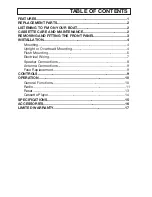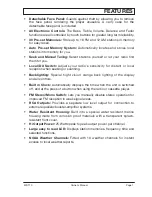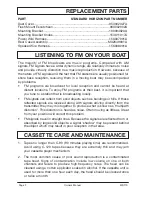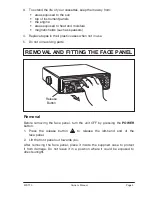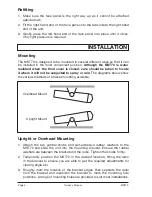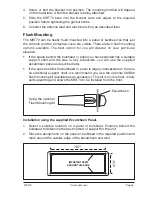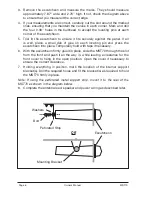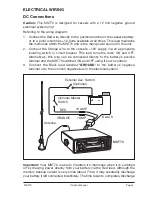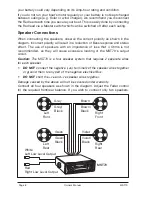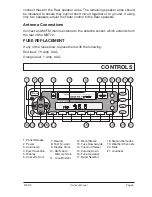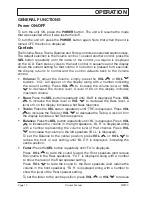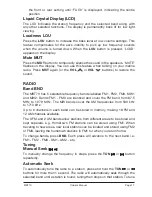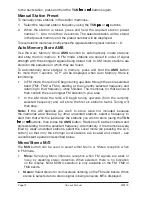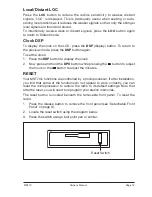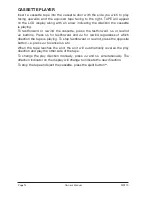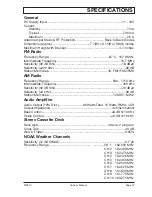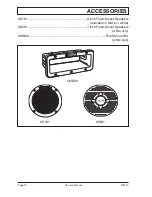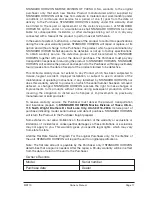
Page 4 Owner’s Manual MST70
Page 2 Owner’s Manual MST70
REPLACEMENT PARTS
PART
STANDARD HORIZON PART NUMBER
Dust Cover.......................................................................................053002027A
Flush Mount Escutcheon.................................................................063002002A
Mounting Bracket............................................................................160004023A
Mounting Bracket Knobs.................................................................154011017A
Power Wire Harness........................................................................156007001A
Rear Case Assembly......................................................................M32649001A
Speaker Wire Harness.....................................................................156008001A
LISTENING TO FM ON YOUR BOAT
The majority of FM broadcasts are music programs. Compared with AM
signals, FM signals have a wider dynamic range, are relatively immune to noise
and provide virtually distortion free music reproduction. However, because of
the nature of FM signals and the fact that FM stations are usually positioned for
shore base reception, receiving them in a moving boat may be accompanied
by problems.
• FM programs are broadcast for local reception and cannot be heard at
distant locations. To enjoy FM programs at their best, it is important that
you tune to a station that is broadcasting locally.
• FM signals can reflect from solid objects such as buildings or hills. If these
reflected signals are received along with signals arriving directly from the
transmitter, they may mix together to produce what is known as 'multipath
distortion'. This distortion is heard as noise. Often moving as little as 3 feet
from your position will correct this problem.
• FM signals travel in straight lines. Because the signals are reflected from or
absorbed by large solid objects, a signal 'shadow' may be present behind
the object which may result in poor reception in that area.
CASSETTE CARE AND MAINTENANCE
1. Tapes no longer than C-90 (90 minutes playing time) are recommended.
Avoid using C-120 tapes because they are extremely thin and may jam
your cassette player mechanism.
2. The most common cause of poor sound reproduction is a contaminated
tape head. Signs of contamination include low volume on one or both
channels and failure to produce high frequency notes. The head can be
cleaned using a cotton applicator soaked in alcohol. If the cassette unit is
used for more than one hour each day, the head should be cleaned once
or twice a month.


